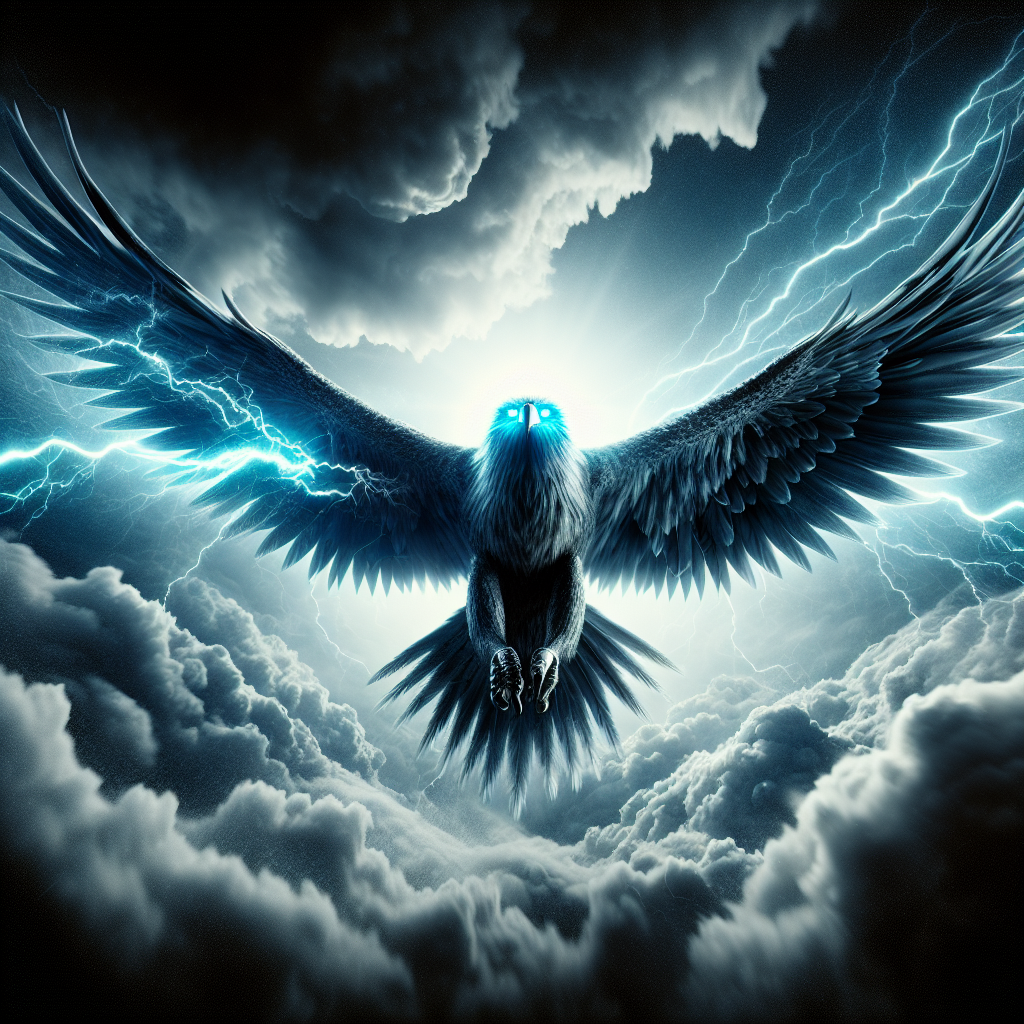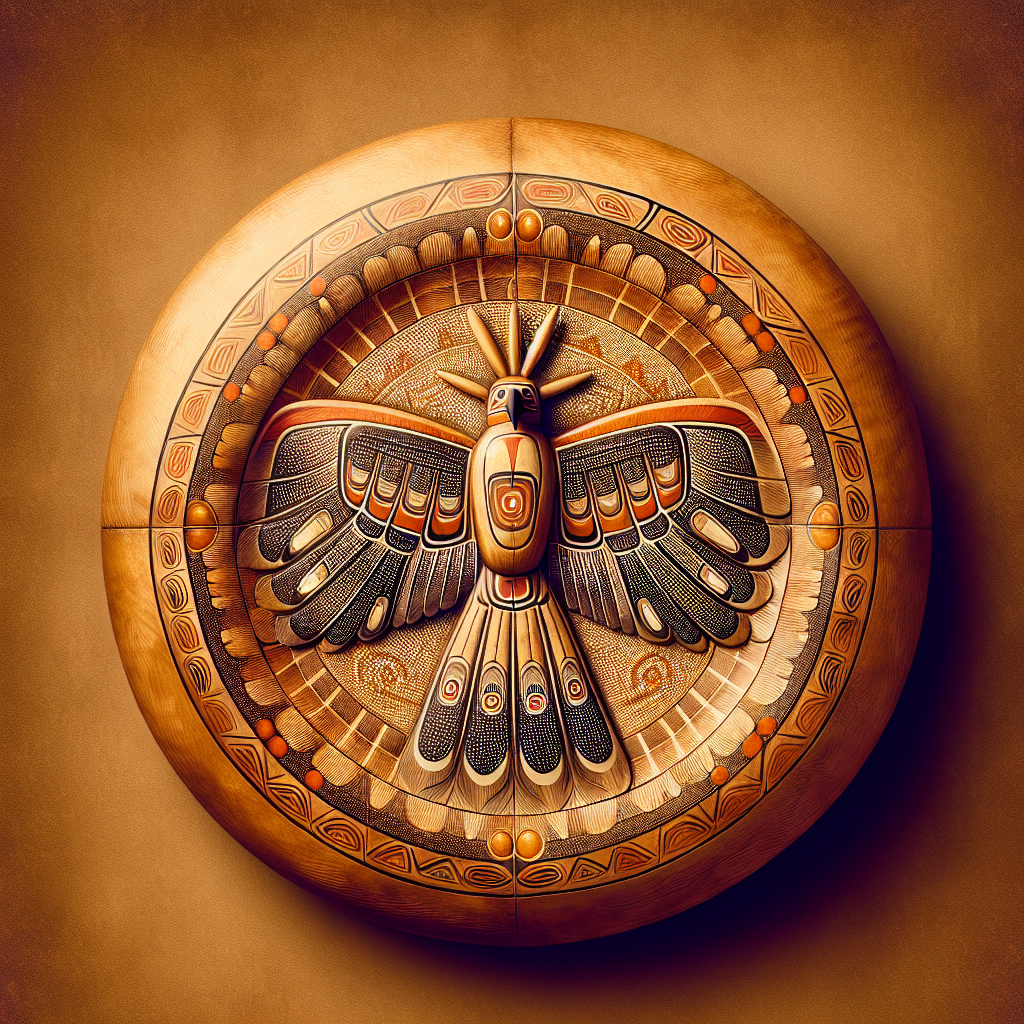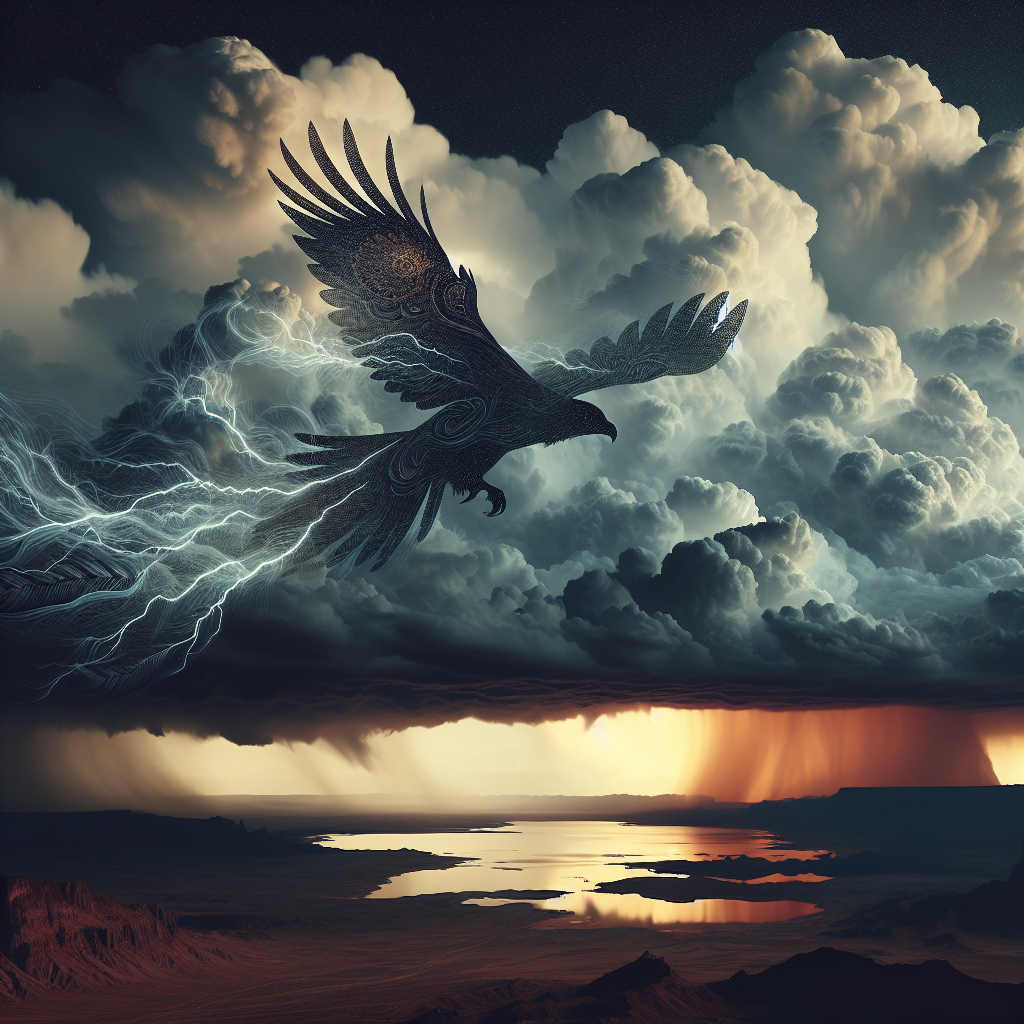
Across the vast expanse of North American skies, few mythical creatures command as much reverence and terror as the Thunderbird. This colossal avian being, whose wings are said to span the breadth of storm clouds and whose eyes flash with the fury of lightning, stands as one of the continent’s most enduring and culturally significant supernatural entities. Unlike many mythical creatures that emerged from single cultural traditions, the Thunderbird represents a remarkable convergence of belief systems, appearing in the sacred narratives of over thirty distinct Native American tribes from the Pacific Northwest to the Great Plains.
Table of Contents
ToggleOrigins in Sacred Tradition
The Thunderbird’s mythological roots extend deep into pre-Columbian America, with archaeological evidence suggesting its symbolic presence dates back over 3,000 years. Petroglyphs and pictographs depicting massive birds wielding lightning appear across ancient sites from the Columbia River Gorge to the Midwest, indicating that reverence for this creature transcended tribal boundaries and persisted across millennia.
In Lakota tradition, the Thunderbird, known as Wakinyan, serves as a messenger of the Great Spirit, dwelling in the realm beyond the sky. The creature’s very existence maintains cosmic balance, engaging in eternal warfare against the destructive water spirits that would otherwise flood the earth. The Ojibwe people speak of Binesi, whose wing beats create thunder and whose blinking eyes produce lightning, while Pacific Northwest tribes describe the Thunderbird as the supreme ruler of the upper world, commanding lesser supernatural beings with absolute authority.
Physical Manifestation and Powers
Contemporary accounts of Thunderbird sightings, while rare and often dismissed by mainstream science, describe a creature of truly staggering proportions. Witnesses report wingspans ranging from 15 to 20 feet, with some claiming even greater dimensions. The bird’s plumage is typically described as midnight black or deep brown, shot through with electric blue or silver that seems to shimmer with its own internal light. Its beak, reportedly capable of crushing boulders, curves to a razor point, while its talons possess the strength to lift full-grown elk or even small vehicles.
The Thunderbird’s supernatural abilities extend far beyond its impressive physical attributes. Traditional accounts credit the creature with complete mastery over meteorological phenomena. Its wing beats generate thunderclaps that can shatter glass and topple trees, while the creature’s call—described as a sound somewhere between an eagle’s scream and rolling thunder—can be heard for miles. Lightning emanates from its eyes, beak, and wing tips, allowing the Thunderbird to strike with precision at enemies or obstacles. Some traditions attribute to it the power of shapeshifting, enabling the creature to appear as a human when necessary, though always retaining some avian characteristic that betrays its true nature.
Cultural Impact and Spiritual Significance
The Thunderbird’s influence on Native American culture extends far beyond simple folklore, permeating spiritual practices, artistic expression, and social organization. Many Plains tribes incorporate Thunderbird imagery into their most sacred ceremonies, with medicine men invoking the creature’s power during healing rituals and rain dances. The prestigious Thunderbird Clan exists among several tribal nations, with membership often reserved for those who have experienced direct supernatural encounters or demonstrated exceptional spiritual sensitivity.

Artistically, the Thunderbird appears on totem poles, ceremonial masks, pottery, and textiles throughout indigenous North America. The creature’s image serves not merely as decoration but as a protective symbol, believed to ward off evil spirits and ensure favorable weather. The famous Thunderbird and Whale motif of Pacific Northwest art represents the cosmic struggle between sky and sea powers, with the Thunderbird invariably portrayed as the triumphant force of order and justice.
Modern Encounters and Cryptozoological Evidence
The 20th and 21st centuries have witnessed a surprising number of Thunderbird encounters, particularly concentrated in areas of traditional significance. Illinois, Pennsylvania, and Alaska have produced the most credible modern sightings, often accompanied by photographic evidence that, while disputed, has proven difficult to definitively debunk.
The most famous modern encounter occurred in Lawndale, Illinois, in 1977, when two enormous birds allegedly attacked three children, successfully lifting 10-year-old Marlon Lowe several feet off the ground before his screams forced them to release him. The incident, witnessed by multiple adults, sparked intensive investigation by both local authorities and cryptozoologists. While skeptics suggested the birds were misidentified turkey vultures or even escaped exotic pets, the witnesses maintained that the creatures far exceeded any known North American bird species in size and behavior.
More recently, Alaska has become a hotspot for Thunderbird activity, with pilots and remote area residents reporting encounters with birds of impossible size. In 2002, a bush pilot flying near Denali reported being paced for several miles by what he described as a black bird with a wingspan greater than his Cessna’s. The creature allegedly maintained perfect formation with the aircraft before disappearing into a thundercloud with unnatural speed.
Scientific Perspectives and Theoretical Explanations
Mainstream ornithology acknowledges that North America once hosted birds of extraordinary size, including the Teratornis, whose wingspan reached 12 feet, and the even larger Argentavis, which soared over South America with wings spanning 23 feet. These massive raptors went extinct approximately 10,000 years ago, coinciding roughly with the end of the last ice age and the arrival of human populations in the Americas.
Some researchers propose that Thunderbird legends preserve actual memories of these prehistoric giants, passed down through oral tradition across hundreds of generations. This theory gains credibility when considering that indigenous accounts often include remarkably accurate descriptions of extinct megafauna, such as mastodons and giant ground sloths, suggesting that cultural memory can indeed preserve biological details across vast time spans.
Alternative explanations focus on misidentification of known species under unusual circumstances. Condors, golden eagles, and even pelicans can appear much larger than their actual size when viewed under specific atmospheric conditions or at unexpected angles. The psychological phenomenon of crypt





